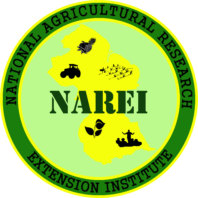The Guyana Mangrove Restoration Project was executed during 2010-2013 under the National Agricultural Research & Extension Institute. Following completion of the Project phase and given the importance of mangroves to Guyana’s coastal defenses, mangrove restoration, and management was integrated into NAREI in 2014.
Mangroves contribute substantially to sea defense in Guyana by damping wave action and reducing wave energy, trapping sediments, and stabilizing shoreline substrates while playing an important role in carbon sequestration.
A range of natural and man-made factors threatens Guyana’s remaining standing mangrove forests. Natural threats to mangroves in Guyana include natural erosive and accretive cycles characteristic of the coastline of the Guianas (Amazon River to the Orinoco River) and large-scale mud bank movements. These patterns have been well documented by researchers in Guyana and neighboring Suriname and French Guiana countries. Originally, the Guyana mangrove belt appears to have been wide enough to recover after erosion periods (a minimum width seems to be about 200m) but the introduction of man-made factors as a result of intensive settlement of Guyana’s coastline has allowed erosion cycles to wipe out some of the mangrove belt
Man-made factors affecting mangroves in Guyana include the direct loss of mangrove habitat as a result of land development for housing and urban development, agriculture and aquaculture, and infrastructure development (e.g. canals, sea defense infrastructure, power lines, etc) and widespread loss as a result of overharvesting of mangroves for raw materials such as firewood and bark and the effects of fire.
Recognition of the values of mangroves, threats, and the increased risks to Guyana’s low-lying coastline posed by predicted rises in sea level and the rising cost of maintenance of the sea defense structures, have prompted a commitment on the part of the Government of Guyana to the conservation, restoration and protection of the mangrove.
WHAT ARE OUR OBJECTIVES?
- To establish the administrative capacity for the management of mangroves in Guyana
- To promote sustainable management of mangrove forest
- To establish and complete a legal framework for mangrove ecosystem management that encourages community-based participation.
- To support research and development of Guyana’s mangrove forest
- To develop effective protection and/or rehabilitation of mangrove ecosystems
- To increase public awareness and education on the benefits of the mangrove forests
WHAT ARE SOME OF OUR PROJECTS?
- Mangrove Restoration:
- Planting
- Monitoring
- Installation of structures
- Community-Based Mangrove Management
- Public awareness and education
- Geographical Information System (GIS) database
- Use of mangrove forest for alternative livelihood
HOW CAN THIS DEPARTMENT HELP YOU?
- Monitoring of mangrove forests
- Provide education on the importance of mangroves
- Facilitation of Mangrove Heritage Trail tours
